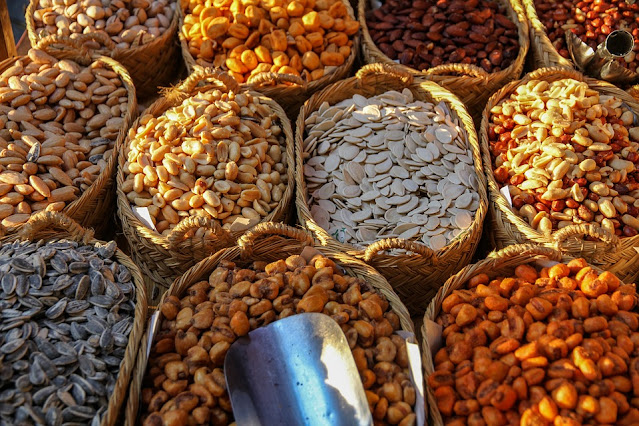5 Popular Types of Kimchi
Kimchi is a spicy and sour dish of fermented vegetable, the most popular one being cabbage. The origin of Kimchi goes back to 7th century Korea when pickling was introduced to store food as it was almost impossible to cultivate during the winters. It is heartening to know that the kimchi we eat today is still prepared the same way since its inception.
Due to the fermentation process, kimchi has high nutritional value, fiber content and low calories. It also contains lactic acid bacteria that helps with digestions and combats bad bacteria. It was also featured in 'Health' as one of the top five healthiest foods in the world. No Korean meal is complete without kimchi and is available in more than 100 variations. Here are 5 popular kimchi variations:
Stuffed Cucumber Kimchi (Oi-so-bagi)
Oi-so-bagi is popular during summer days with its juiciness and crunchy texture. It is made with small cucumber sliced in quarters length wise, keeping one end intact and then the stuffed with finely chopped vegetables such as carrot, onion, radish, ginger and garlic.
Cabbage Kimchi (Baechu)
This seems to be the most popular and is made with salted uncut cabbages mixed with hot pepper powder, garlic, fish sauce and other spices which is then added put in a container and fermented.
Diced Radish Kimchi (Kkakdugi)
The ingredients used for fermenting this variation are similar to Baechu Kimchi and is especially juicy and crunchy with radish playing the main part.
Young Summer Radish Kimchi (Yeolmu)
Again a popular summer variation made with young summer radishes and may be prepared with or without the fermentation process.
Wrapped Kimchi (Bossam)
Bossam kimchi contains fish, jujubes, oyster’s or shrimp, mushrooms, chestnuts, pine nuts, mustard leaf, radish, green onion, pear, watercress wrapped in whole wilted cabbage leaves and then rolled in to a ball and left to ferment for three to four days.
Due to the fermentation process, kimchi has high nutritional value, fiber content and low calories. It also contains lactic acid bacteria that helps with digestions and combats bad bacteria. It was also featured in 'Health' as one of the top five healthiest foods in the world. No Korean meal is complete without kimchi and is available in more than 100 variations. Here are 5 popular kimchi variations:
 |
| Image Source: Flickr Creative Commons Chloe Lim |
Stuffed Cucumber Kimchi (Oi-so-bagi)
Oi-so-bagi is popular during summer days with its juiciness and crunchy texture. It is made with small cucumber sliced in quarters length wise, keeping one end intact and then the stuffed with finely chopped vegetables such as carrot, onion, radish, ginger and garlic.
 |
| Image Source: Flickr Creative Commons Jin Li |
Cabbage Kimchi (Baechu)
This seems to be the most popular and is made with salted uncut cabbages mixed with hot pepper powder, garlic, fish sauce and other spices which is then added put in a container and fermented.
 |
| Image Source: Flickr Creative Commons imcomkorea |
Diced Radish Kimchi (Kkakdugi)
The ingredients used for fermenting this variation are similar to Baechu Kimchi and is especially juicy and crunchy with radish playing the main part.
 |
| Image Source: Flickr Creative Commons Republic of Korea |
Young Summer Radish Kimchi (Yeolmu)
Again a popular summer variation made with young summer radishes and may be prepared with or without the fermentation process.
 |
| Image Source: Flickr Creative Commons Chloe Lim |
Wrapped Kimchi (Bossam)
Bossam kimchi contains fish, jujubes, oyster’s or shrimp, mushrooms, chestnuts, pine nuts, mustard leaf, radish, green onion, pear, watercress wrapped in whole wilted cabbage leaves and then rolled in to a ball and left to ferment for three to four days.





Nice article on khimchi
ReplyDelete